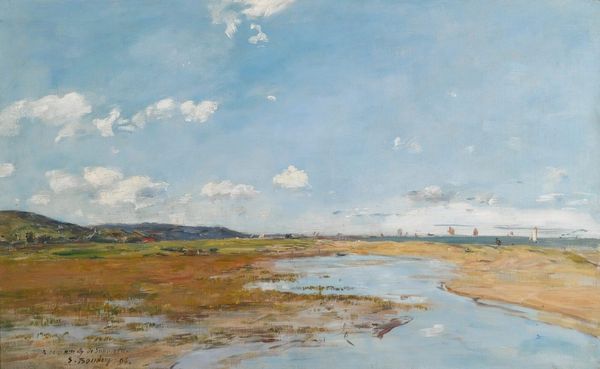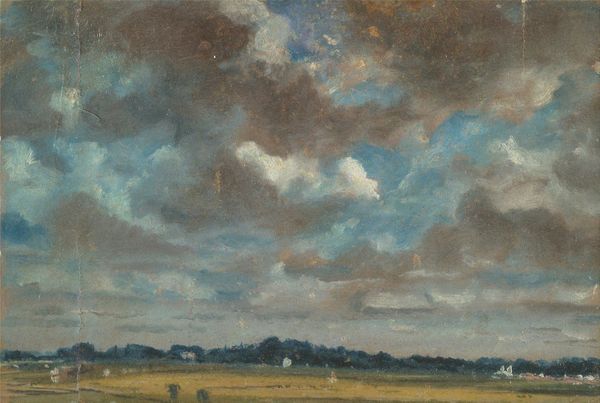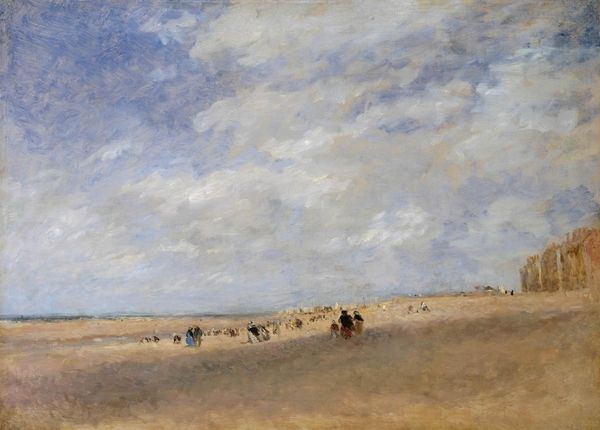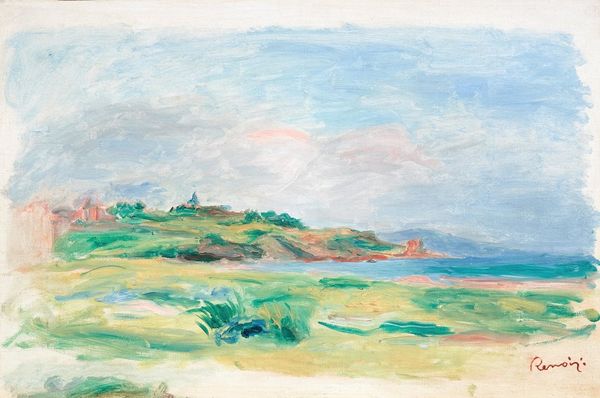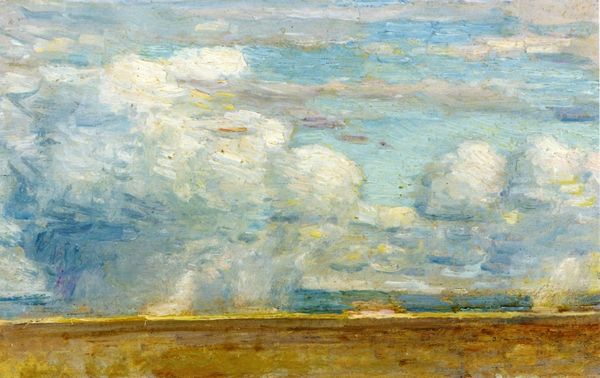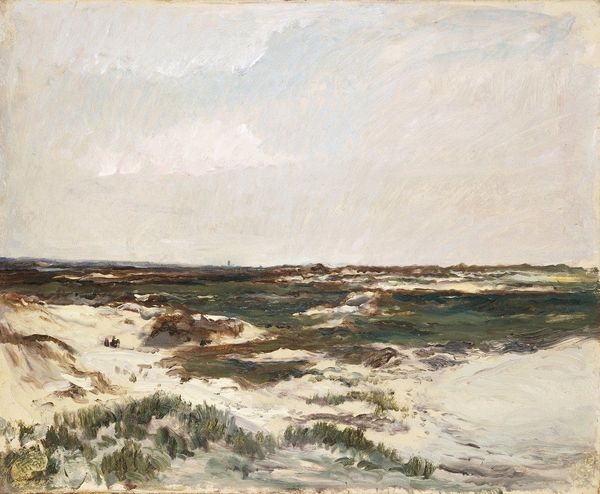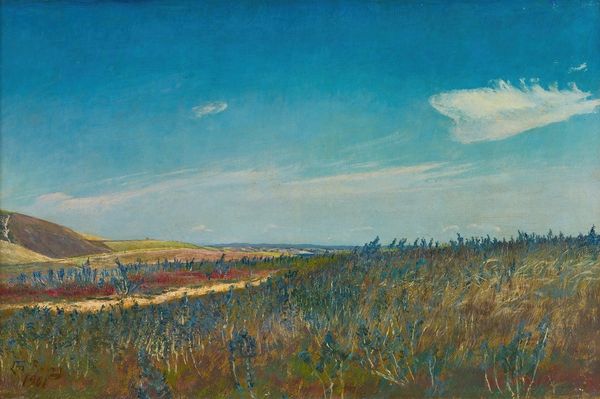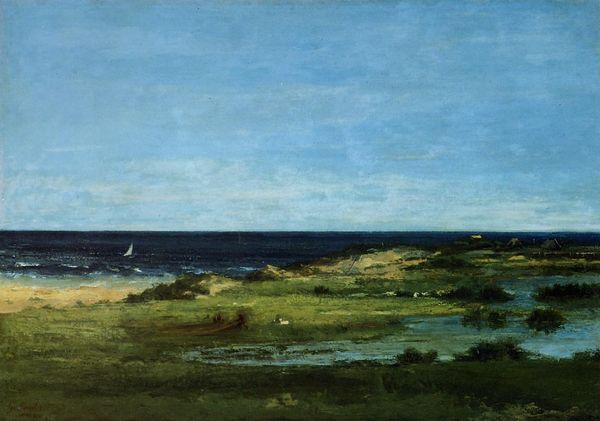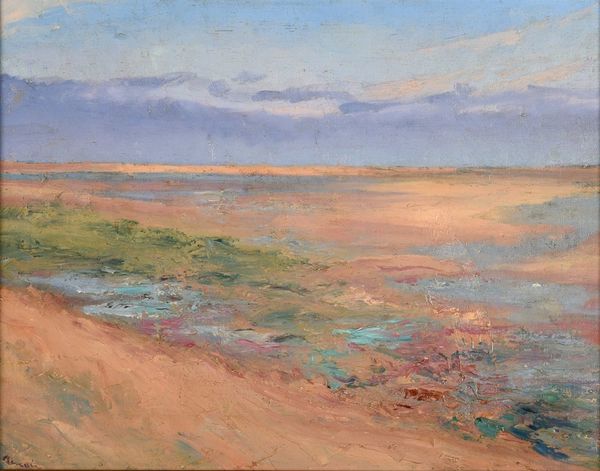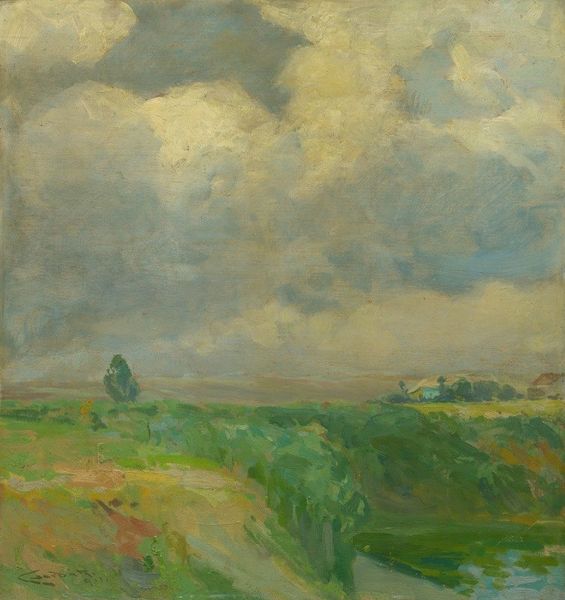
glasgow-school
Copyright: Public domain
Editor: Here we have Sir John Lavery's "The Golf Course, North Berwick," painted in 1922. It's an oil painting and the colors feel very muted, almost dreamlike. What stands out to you? Curator: Notice how Lavery positions the horizon line low, emphasizing the vastness of the sky. What does that evoke for you? Blue has long been a symbol of melancholy and contemplation; but observe also the dynamic interaction between earth and sky, suggesting the transient nature of experience. Golfers are rendered as insignificant and fleeting forms, almost overwhelmed by nature. What deeper, perhaps psychological, narratives could that layering point toward, do you think? Editor: It definitely makes the people feel small, like they're at the mercy of the elements. Almost like nature is indifferent to their game. But the game of golf is about taming nature! Curator: Precisely! Herein lies the symbolic tension. Golf itself could be seen as a metaphor for our attempts to impose order onto a chaotic world, yet the ever-present sky subtly undermines this human ambition. What happens to symbols as we begin layering more humanistic activities onto primal settings? Consider, too, the broader historical context. Post-World War I, perhaps this work meditates on the futility of control in the face of overwhelming events, a recurring artistic response to societal trauma through art. Editor: That makes me think differently about the entire composition. So much of the sky! Curator: Visual language, indeed, asks more than it answers, especially when artists explore symbolic nuance so directly related to larger issues such as industrialization and, ultimately, global catastrophe. Editor: I’ll never look at a landscape painting the same way again. Thank you! Curator: Avenues for reflection on cultural memory are always abundant, ever echoing historical truths within painted gestures and formal construction!
Comments
No comments
Be the first to comment and join the conversation on the ultimate creative platform.



